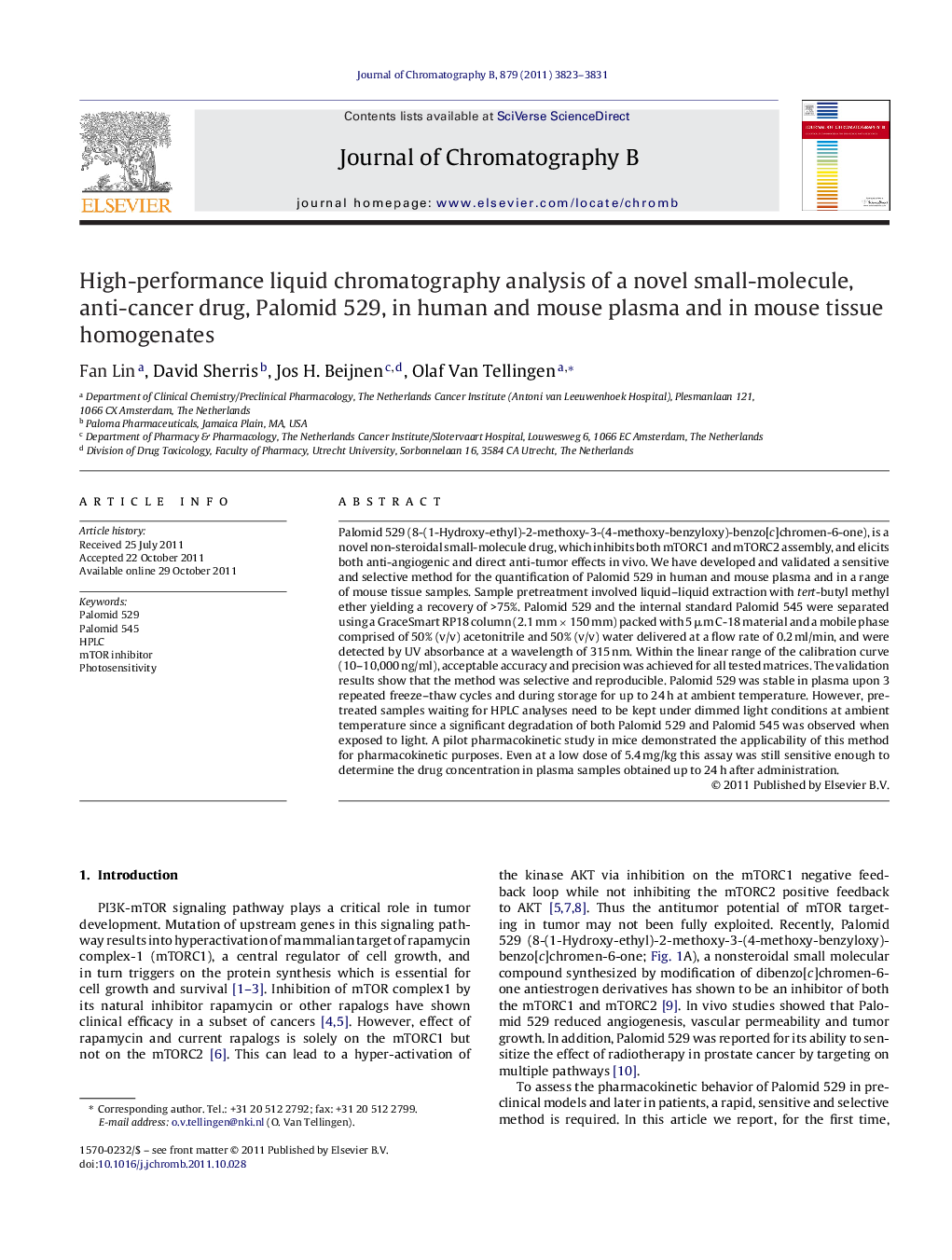| Article ID | Journal | Published Year | Pages | File Type |
|---|---|---|---|---|
| 1217124 | Journal of Chromatography B | 2011 | 9 Pages |
Palomid 529 (8-(1-Hydroxy-ethyl)-2-methoxy-3-(4-methoxy-benzyloxy)-benzo[c]chromen-6-one), is a novel non-steroidal small-molecule drug, which inhibits both mTORC1 and mTORC2 assembly, and elicits both anti-angiogenic and direct anti-tumor effects in vivo. We have developed and validated a sensitive and selective method for the quantification of Palomid 529 in human and mouse plasma and in a range of mouse tissue samples. Sample pretreatment involved liquid–liquid extraction with tert-butyl methyl ether yielding a recovery of >75%. Palomid 529 and the internal standard Palomid 545 were separated using a GraceSmart RP18 column (2.1 mm × 150 mm) packed with 5 μm C-18 material and a mobile phase comprised of 50% (v/v) acetonitrile and 50% (v/v) water delivered at a flow rate of 0.2 ml/min, and were detected by UV absorbance at a wavelength of 315 nm. Within the linear range of the calibration curve (10–10,000 ng/ml), acceptable accuracy and precision was achieved for all tested matrices. The validation results show that the method was selective and reproducible. Palomid 529 was stable in plasma upon 3 repeated freeze–thaw cycles and during storage for up to 24 h at ambient temperature. However, pre-treated samples waiting for HPLC analyses need to be kept under dimmed light conditions at ambient temperature since a significant degradation of both Palomid 529 and Palomid 545 was observed when exposed to light. A pilot pharmacokinetic study in mice demonstrated the applicability of this method for pharmacokinetic purposes. Even at a low dose of 5.4 mg/kg this assay was still sensitive enough to determine the drug concentration in plasma samples obtained up to 24 h after administration.
► We describe an HPLC assay for Palomid 529 in human and mouse plasma and tissues. ► Sample pre-treatment involved liquid–liquid extraction with tert-butyl methyl ether. ► Separation involved reversed phase HPLC and detection by UV at 315 nm. ► The dynamic range was 10–10,000 ng/ml. ► The applicability for in vivo pharmacokinetics studies is demonstrated.
